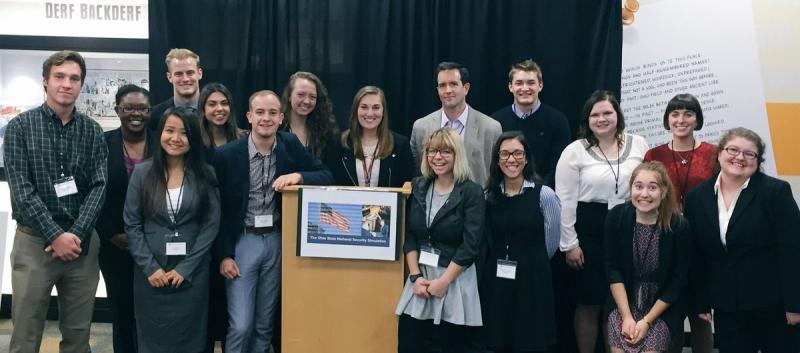Simulations give students real-life reporting experience

When students take one of clinical assistant professor Nicole Kraft’s four public affairs journalism classes, they only spend some of their time in the classroom. The students engage with journalism professors, policymakers, lawyers, intelligence analysts, politicians and more while learning what the real world of journalism looks and sounds like.
“Bringing in people at the top of their field to share not only their experiences but their expectations is what sets Ohio State’s journalism program apart,” said Kraft. “Having professionals on hand to catch mistakes, challenge students and offer real-time feedback helps prepare them for a job as soon as they graduate.”
In Kraft’s Media Writing and Editing class, her students participate in Ohio State’s National Security, a two-day event that models a national security issue in the federal government.
The simulation includes curriculum designed by Kraft and Peter Mansoor, a retired U.S. Army colonel and General Raymond W. Mason Jr. Chair in Military History. Seasoned lawyers, reporters, policy makers, analysts, judges and politicians from Washington, D.C. and Ohio State gather in Columbus to test the skills of these students.
“There are few more gratifying moments in journalism education than when you realize students ‘get it.’ That day, our students showed us they got it — they learned, they executed, they excelled,” said Kraft.

The National Security Simulation took place last November, where students were confronted with a national security crisis that came straight from the headlines. The President of the United States had just addressed a joint session of Congress where he requested authorization for the use of military force in Iraq and Syria. Students then had two days to determine the outcome of the simulation by learning and addressing real-world law, policy and fact.
This is an abridged version of an article that first appeared in the College of Arts & Sciences’ Ascent newsletter Spring 2017.
